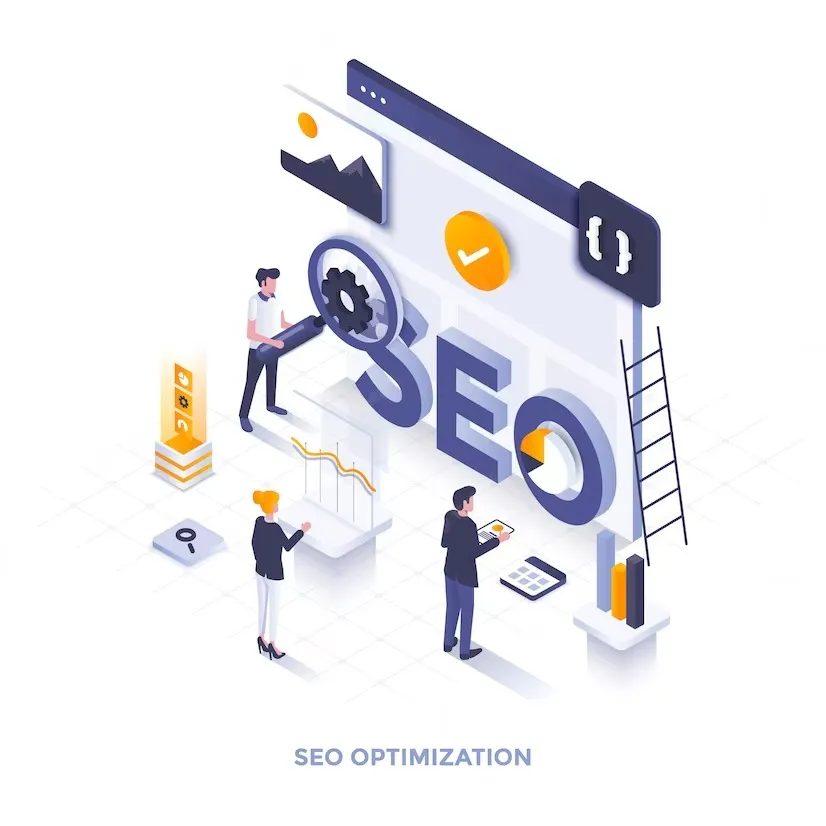Are you ready to take your business to the next level in the ever-evolving world of digital marketing? Look no further! In today’s mobile-dominated landscape, mastering Mobile-First Indexing and Local SEO is essential for businesses of all sizes. With the majority of online searches now occurring on mobile devices, it’s crucial for businesses to have a strong mobile presence and be optimized for local search.
But don’t worry, we’ve got you covered. In this guide, we’ll dive into the world of Mobile-First Indexing and Local SEO, equipping you with the knowledge and tools to ensure your business stands out in local searches and thrives in the mobile revolution. Get ready to embrace the power of mobile and elevate your business to new heights!

Unveiling the Concept of Mobile-First Indexing
Mobile-First Indexing is a pivotal shift in the way Google understands and ranks websites. But what does this term actually mean? In the most basic sense, mobile-first indexing means that Google primarily uses the mobile version of a website’s content for indexing and ranking. In the past, Google’s index primarily used the desktop version of a site’s content. This change reflects the dramatic shift in user behavior, with more users now accessing the web through mobile devices than desktop computers.
Google’s Mobile-First Indexing: A Shift in Ranking Dynamics
The introduction of mobile-first indexing means Google now considers the mobile version of your site as the ‘primary’ version for ranking purposes. If a site doesn’t have a mobile version, Google will still index the desktop version. However, the lack of a mobile-friendly experience could impact the site’s ranking on both mobile and desktop searches.
Mobile-first indexing doesn’t mean ‘mobile-only.’ There’s still a single index with both mobile and desktop versions. However, the whole ‘mobile-first’ buzz means Google will use the mobile version for ranking once the site is migrated to the mobile-first index.
It’s not a separate Google index, just a change in how the content is gathered for the index. The key takeaway is that Google now views your site through the lens of a mobile user, so ensuring your mobile site is fully optimized is more important than ever.

Importance of Mobile-First Indexing in Business
In the ever-evolving digital landscape, mobile-first indexing has become more than just a buzzword, it has evolved into a necessity. Imagine an army of tiny bots scouring the internet, ranking and categorizing web pages based on their mobile version. These bots, dispatched by Google, are implementing mobile-first indexing, and the way they perceive your website can significantly affect your online presence.
Let’s start by understanding why mobile-first indexing is a game-changer. With the majority of users now accessing the internet via mobile devices, Google decided to prioritize the mobile versions of web pages. This means if your business website doesn’t perform well on mobile, it can severely hamper your rankings and visibility on the search engine results page (SERP).
The Key to Satisfying Customers and Boosting Conversions
Another factor to consider is the user experience. A well-optimized mobile site creates a positive user experience, fostering customer satisfaction and engagement. Today’s consumers are quick to abandon a site if it doesn’t load quickly or function smoothly on their mobile devices. Hence, a poorly optimized mobile site can drive potential customers away, impacting your conversion rates and ultimately, your bottom line.
Furthermore, mobile-first indexing is a factor that can determine whether your website gets featured in Google’s Local Pack, a coveted spot in SERPs that highlights local businesses. If your site is not mobile-friendly, it can affect your local search ranking and visibility, potentially missing out on a vast pool of local customers.
In a nutshell, mobile-first indexing is not only essential for better search engine rankings and visibility, but it also plays a critical role in enhancing user experience and boosting local SEO. This is why it’s crucial for businesses to adapt and embrace a mobile-first approach.

Steps to Ensure Your Website is Ready for Mobile-First Indexing
Entering the realm of Mobile-First Indexing requires adequate preparation. Your website needs to be ready to offer a seamless experience for mobile users. Here’s how you can gear up for this.
Firstly, implement a responsive design. A website with a responsive design automatically adjusts to fit the screen size of the device it’s viewed on. This ensures that your website looks and functions great on any device, especially mobile ones.
Next, optimize your website speed. Mobile users expect fast load times. Slow-loading websites can drive away potential customers and hurt your search engine ranking. Therefore, compress your images, use browser caching, and minimize HTTP requests to speed up your website.
Thirdly, ensure your website is user-friendly. Simplicity is key when it comes to mobile design. Use clear and concise content, easy navigation, and large clickable areas to provide a pleasant mobile user experience.
Navigating Google’s Mobile-First Indexing
Also, be wary of the ‘Mobile-First Indexing’ rule. Google predominantly uses the mobile version of the content for indexing and ranking. So, ensure your mobile site contains the same content as your desktop site.
Lastly, keep an eye on technical SEO. Make sure your website is crawlable, has a structured data, and meta tags are properly used.
Remember, Mobile-First Indexing doesn’t mean ‘mobile-only’. Your desktop site still matters. While focusing on your mobile site, don’t neglect the experience on the larger screen. By following these steps, you can set your business up for success in the mobile-dominant era.
The journey to mastering Mobile-First Indexing can be challenging, but with the right strategies in place, your business is poised to make a powerful impact in the local searches. Buckle up and get ready to excel in the mobile realm!

Decoding the Art of Local SEO
Let’s break down the mystery of Local SEO, an essential element of successful digital marketing in today’s mobile-focused world. Local Search Engine Optimization, or Local SEO, is all about increasing your business’s visibility on location-based searches. It helps your business to be more visible to customers in your geographical area, making it easier for them to find you and your services.
Local SEO works hand in hand with Mobile-First Indexing, as location-based searches are more common on mobile devices due to their mobility. When a potential customer searches for services ‘near me’ or ‘in [location]’, search engines provide results based on the user’s geographical location. If your business is properly optimized for Local SEO, you’re more likely to appear in these local search results, increasing your visibility and attracting more customers.
Crafting a Winning Strategy with Google My Business, Reviews, and Keywords
The key elements of Local SEO include creating and optimizing your Google My Business account, gathering and responding to customer reviews, and using local keywords. Remember, it’s not just about popping up on search engines, but also about providing accurate and helpful information to draw in customers. It’s a science and an art, combining technical SEO skills with creative content strategies to target your local audience.
Now that we’ve decoded the basics, it’s time to delve deeper into how you can leverage Local SEO to boost your business. Stay tuned as we discuss the role of Local SEO in business growth and explore effective strategies to optimize your business for local search. Understanding and implementing Local SEO can be a game-changer in your journey to master the mobile revolution. Let’s get started!

The Role of Local SEO in Business Growth
In today’s digital age, local SEO has emerged as a key factor driving business growth. Why so? Because, fundamentally, local SEO allows your business to reach potential customers in your vicinity when they’re most likely to need your products or services.
When customers perform a search with local intent, such as “coffee shop near me” or “best hair salon in [city name]”, Google provides them with a list of businesses that match their search and are located in the surrounding area. This is where the magic of local SEO comes into play. By optimizing your business for local SEO, you increase the likelihood of your business appearing in these highly targeted local search results.
The Power of Local SEO in Driving Visibility, Foot Traffic, and Sales
What does this mean for your business? Higher visibility leads to increased website traffic, more foot traffic to your brick-and-mortar locations, and ultimately, a boost in sales. The beauty of local SEO is its ability to connect your business with customers in real-time, just when they need you the most.
Further, local SEO helps build a strong online reputation. By encouraging customers to leave reviews, responding to feedback, and maintaining accurate, up-to-date information across all digital platforms, your business can develop a positive online presence. This not only builds trust with potential customers but also strengthens your business’s standing in local search rankings.
However, it’s important to note that the role of local SEO in business growth isn’t a one-size-fits-all. Its effectiveness will depend on your specific industry, the competition in your local area, and your commitment to ongoing optimization. But no matter your business type, when wielded correctly, local SEO can act as a powerful tool to drive business growth in the mobile-first era.

Strategies to Optimize Your Business for Local SEO
With the rise of local searches, having a robust Local SEO strategy is key to ensuring your business’s visibility. Here are some essential steps you can take to optimize your business for local SEO.
Start by claiming and optimizing your Google My Business (GMB) profile. GMB is a free tool from Google that lets you manage how your business appears on Google Search and Maps. Fill in all your business information, including name, address, phone number, and hours of operation, accurately and consistently. Remember to include photos, reviews, and updated information about your business to help it stand out.
Elevate Your Presence in Search Results with Strategic SEO Tactics
Another strategy is to use local keywords. By incorporating location-specific keywords into your website content, meta tags, and even social media posts, you increase your chances of appearing in local search results. Use tools like Google’s Keyword Planner or other SEO tools to identify local keywords relevant to your business.
On-page SEO optimization is another must-do. Each page on your website should have a unique title tag and meta description, with relevant keywords included. Make sure your content is valuable, original, and relevant to your local audience.
Never underestimate the power of online reviews. Positive reviews not only build trust with potential customers but also signal to Google that your business is legitimate and respected, helping to boost your local ranking.
Lastly, consider using local business schema. It’s a type of website code that helps search engines better understand your business and its location. It can significantly boost your visibility in local search results.
By employing these strategies, you can optimize your business for Local SEO and improve your visibility in local searches. However, remember that SEO is a marathon, not a sprint. Consistent effort and time are needed to see significant results.

Navigating the Mobile-First Indexing and Local SEO Landscape
Venturing into the world of Mobile-First Indexing and Local SEO may initially seem daunting, but with the right approach, it is a manageable and highly beneficial journey. The key is to remain updated with Google’s ongoing updates, which may bring changes to the mobile-first indexing or local SEO guidelines.
Monitoring, Adapting, and Thriving in the Evolving SEO Landscape
Actively monitor your website’s performance through Google Analytics or other SEO tools, adjusting your strategy as necessary based on these insights. Engage with your audience through mobile-friendly content and enhance your online presence through local SEO efforts. Remember, digital marketing is not a static field but a dynamic, ever-evolving landscape. Embrace these changes and evolve with them. Be flexible, be resilient, and most importantly, be patient.
The journey to mastering Mobile-First Indexing and Local SEO is not a sprint but a marathon. It requires continuous effort, evaluation, and optimization. With time and persistence, your business will stand out in the local searches, ensuring your relevance and competitiveness in the mobile-dominated era. So, take the plunge, navigate through the mobile-first indexing and local SEO landscape, and watch your business reach new heights!









